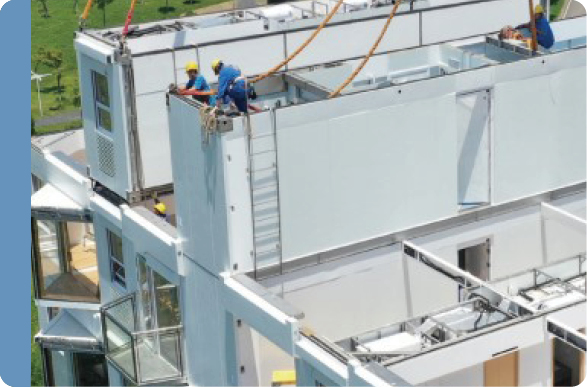Modular Construction with Stainless Steels

Currently 80% of global GDP is generated in our towns and cities and today 57% of our global population live in those towns and cities. This equates to 4.6bn people from a total current population of 8.1bn. This proportion is expected to increase to 68% by 2050 which will mean 6.7bn people will be living in urban settings from an expected total global population of 9.8bn. As this urban megatrend unfolds different construction thinking is needed in order to accommodate this expected urban population increase without ‘eating up’ agricultural land by expanding our urban footprints. Furthermore, the total lead time for new traditional buildings is already increasing due to a combination of skills shortages, material shortages and supply chain challenges. Additionally, from a health and safety at work perspective traditional manufacturing suffers at least 3 times the number of workplace fatalities compared to the manufacturing sector.
Modular construction offers a compelling opportunity because;
- The building or structural design and manufacturing is simplified and standardized which helps to overcome the current and future skills shortages.
- The assembly and installation is both rapid and is a much safer approach because there are less manual tasks and construction workers will have a much small bill of materials.
- Flexible building use becomes the norm and includes homes, offices, educational establishments and medical centers all deliverable from the same modular units.
- Disassembly and relocation of the modular units is also rapid if needed
The approach offers a significant cost and speed reduction compared to traditional construction methods. For example a total construction lead time of 12 months can be reduced to just 12 weeks or even less.
Modular construction also allows for a rethinking of materials selections decisions which permits an increased use of more resilient materials whilst offering a significant reduction in both life cycle costs and life cycle emissions.
This webinar has ended. You can watch a recording here.







